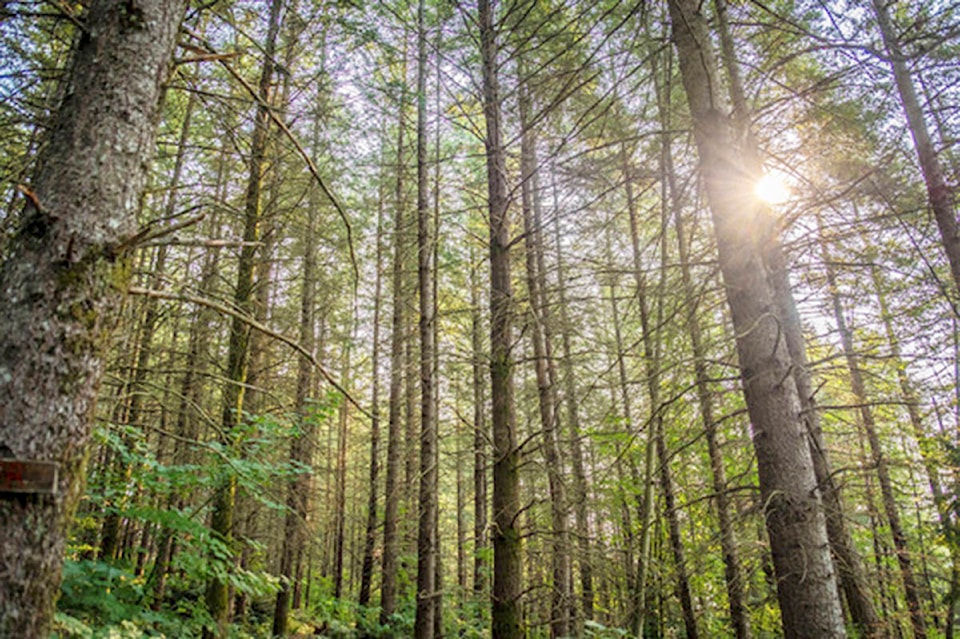Last article I mentioned that Conservation Society sponsored a module for the Gavin Lake fall program called the ‘Wood Wide Web,’ focused on trees and the water cycle as well as tree communication. At the end of this module, kids get to walk back about a kilometre through the forest at their own pace, ‘Forest Bathing’ as they go.
As far as I can tell, the concept of Forest Bathing seems to have originated in Japan as ‘Shrinrin-Yoku’ and became mainstream in the 1980s.
Doctors started to prescribe Shrinrin-Yoku as an adjunct to treating multiple medical conditions. It started to catch on in Europe more recently and has now reached the U.S. and Canada, with numerous scientific studies now supporting the practice as more than hopeful thinking. The basic idea is that walking in a forest regularly is not only great preventative medicine, but also has therapeutic value for many acute and chronic conditions.
I think most of us intuitively know that we feel better after some time around trees and greenery, but there is now a mountain of science to explain it. I started scanning numerous research papers: blood samples comparing subjects who walked in urban areas compared with forests; samples of forest air detecting phytochemicals, experiments testing the efficacy of tree organic compounds on common ailments. If you have the time and the inclination to do the same, it’s a fascinating area of developing science.
READ MORE: Snow science at Gavin Lake
Here is the very basic summary: trees give off organic compounds called phytochemicals, most of which are terpenes (there are about 40,000 of them). These are thought to be part of the tree’s defence mechanism against herbivores and insects and contribute to that forest ‘smell.’
Terpenes in the laboratory have been shown to exert anti- inflammatory, anti- tumorigenic effects and protect the nervous system. The question then is whether we breathe in enough of these terpenes while in the forest to have any actual effect on our own metabolisms. Some of this is still early science, but everything so far seems to be a convincing ‘yes.’ For example, one study showed a short trip to the forest was shown to help kids with asthma and inflammatory skin conditions. A review article looking at multiple studies from 2007-2017 highlighted the physiological and psychological therapeutic effects forest bathing has for chronic pain, arthritis, bronchitis, chronic obstructive pulmonary disease, diabetes, anxiety and depression and more.
READ MORE: Imperfectly perfect through small, consistent lifestyle changes
The coming winter will be a stressful one for many. Health, financial and business worries, loneliness and loss of social lives will affect almost all of us to some extent, and much is beyond our personal control. However, we are a community surrounded by forests with all they have to offer our physical and mental health.
For those of us physically able to, this may be the winter to purposefully make time for regular ‘forest bathing’; boosting our immune systems and clearing mental space to help us face whatever challenges appear over the next few months.
Waste Wise Tip: Single use plastic waste has soared during covid. Help wherever you can by getting back to reusable bags and avoiding single use plastics unless absolutely necessary.
For more information on Water Wise or Waste Wise and any of our school and community programs, contact the Cariboo Chilcotin Conservation Society at sustain@ccconserv.org or visit the website at www.cconserv.org.
Jenny Howell is a Water Wise instructor and the executive director of the Cariboo Chilcotin Conservation Society.
Do you have a comment about this story? email:
editor@wltribune.com
Like us on Facebook and follow us on Twitter.
